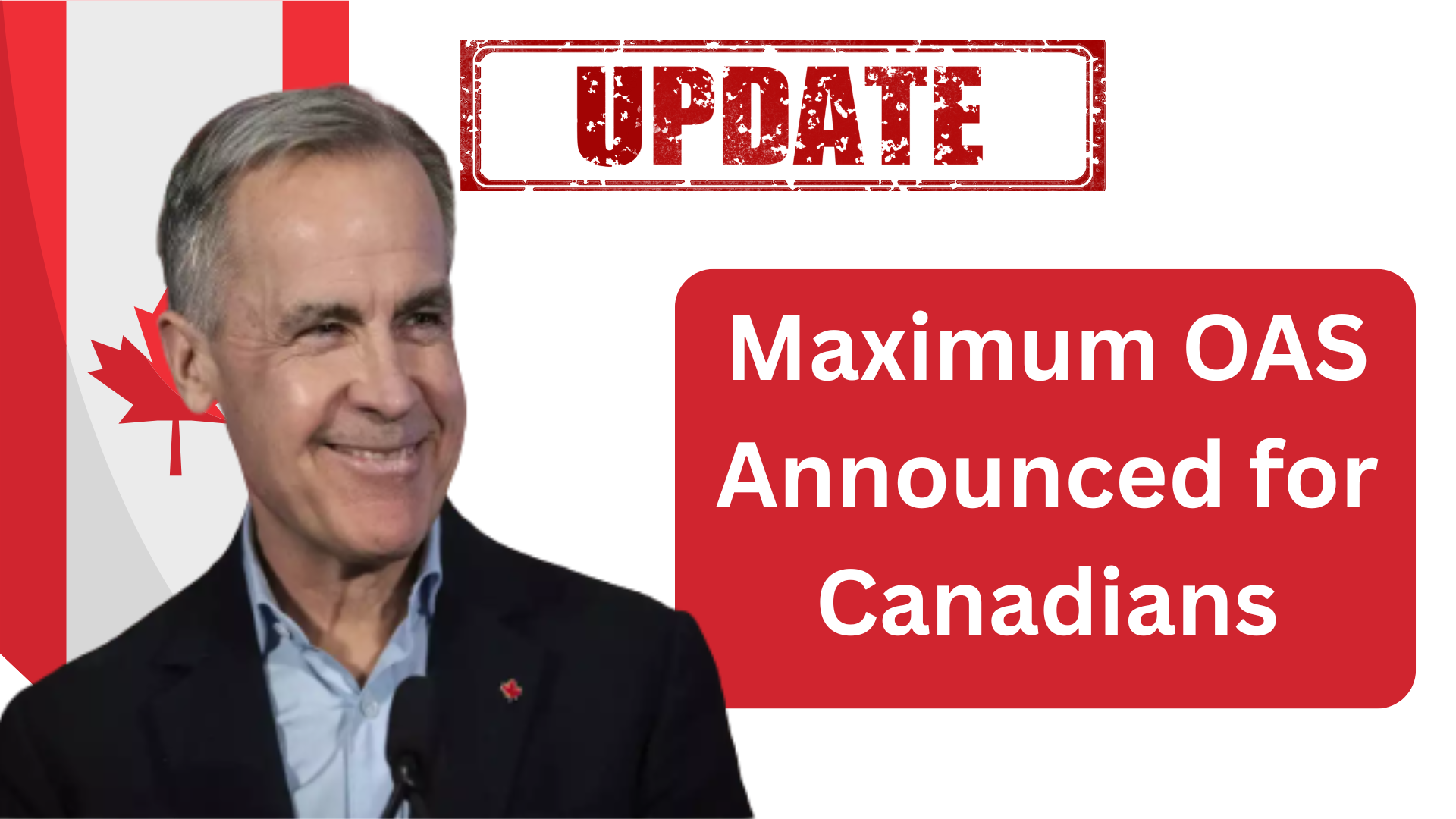A generous uplift and important rule changes are about to reshape retirement incomes as the maximum OAS is announced for Canadians. The New Rates, Rules, Clawbacks, and Limits are explained here, as it brings new monthly rates and updated thresholds and hence some significant changes.
Maximum OAS Announced for Canadians
On August 1, 2025, Canada’s Old Age Security (OAS) pension will see its maximum monthly payment rise to $738.76. Alongside this increase, the income thresholds that trigger the OAS recovery tax—often called the clawback—have been adjusted, and eligibility rules for partial pensions have been clarified. These updates will affect how much seniors receive and when high earners start repaying their benefits.
New Maximum OAS Rate and How It’s Determined
The 6.5 percent increase from the previous rate of $693.56 to $738.76 reflects Canada’s annual inflation adjustment under the OAS indexation formula.

Each year, OAS benefits rise because the Consumer Price Index (CPI) increases, ensuring pensioners’ income keeps pace with rising living costs. With CPI averaging around 6.5 percent over the past 12 months, seniors will see substantially more in their bank accounts every month.
Revised Clawback Thresholds
To protect lower- and middle-income retirees while recovering OAS from high earners, the clawback thresholds have been moved upward:
| Tax Year | Clawback Threshold Starts at | Full Recovery at | Clawback Rate |
|---|---|---|---|
| 2024–2025 | $81,761 | $134,626 | 15 percent of excess |
| 2025–2026 | $85,000 | $140,200 | 15 percent of excess |
Above the lower threshold, 15 percent of every dollar earned reduces OAS payments. Once net income reaches the upper threshold, OAS benefits are fully recovered. By raising both thresholds, fewer seniors will face partial repayment, and high earners can keep more of their pension.
Expanded Partial Eligibility for Newcomers
Previously, full OAS required 40 years of Canadian residence after age 18. Now, newcomers with 10–39 years of residence qualify for a partial pension proportional to their years in Canada. For example, someone with 20 years of residence receives 50 percent of the full OAS rate. This change simplifies rules for immigrants and long‑term residents, ensuring they receive fair support based on their time in Canada.
Calculating Your Actual OAS After Clawback
To estimate your net benefit:
- Determine your net income from Notice of Assessment.
- Subtract the lower threshold ($85,000 for 2025–26).
- Multiply the excess by 0.15.
- Divide by 12 to find your monthly reduction.
- Subtract that figure from $738.76.
For example, a retiree with $100,000 net income pays:
($100,000 – $85,000) × 0.15 = $2,250 annual clawback, or $187.50 per month.
Their net monthly OAS becomes $738.76 – $187.50 = $551.26.
Strategies to Minimize Clawbacks
Seniors can use several tactics to reduce or avoid the clawback:
- Income splitting with a spouse or common‑law partner to lower individual income.
- Timing Registered Retirement Income Fund (RRIF) withdrawals to smooth income across years.
- Delaying OAS up to age 70 to increase the monthly rate by 0.6 percent for every month deferred.
- Contributing to a Tax‑Free Savings Account (TFSA) to generate tax‑free income that does not count toward the clawback thresholds.
Preparing for the August Increase
To make sure you receive your full entitled amount:
- Check and update your contact and banking information on My Service Canada Account.
- Review your residency history and confirm the years of Canadian residence if you’re an immigrant.
- Consult a tax professional or financial planner for tailored strategies around RRIF withdrawals and income splitting.
- Keep an eye on your spring Notice of Assessment for final thresholds and rates.
Looking Ahead
The OAS program is reviewed annually in the federal budget, so future adjustments to rates, thresholds, or eligibility rules may follow. Staying informed through Canada Revenue Agency (CRA) publications and Service Canada announcements will help you plan effectively.
Thank you for reading and taking steps to maximise your Old Age Security benefits.